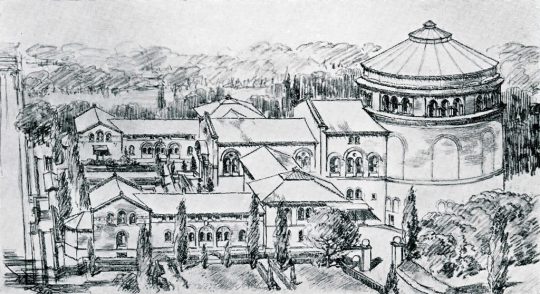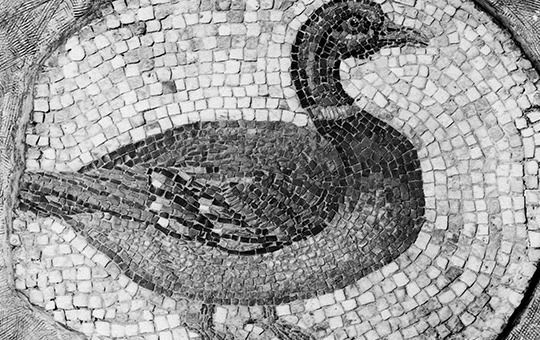Volume XI / Number 2
1920

Vol. XI / No. 2
Foreword
In this number of the JOURNAL is presented a description of the collections in the Mediterranean Section of the Museum. […]
View Article
Vol. XI / No. 2
By: Dr. Eleanor E. Rambo
Crete
Crete, sometimes aptly called “the halfway house between Egypt and Greece,” was, during the third and second millenia B.C., the […]
View Article
Vol. XI / No. 2
By: Dr. Eleanor E. Rambo
Antiquities From Cyprus
Case V. Case V is devoted to Cypriote vases and crude sculptures. The culture of Cyprus is distinct from that […]
View Article
Vol. XI / No. 2
By: Dr. Eleanor E. Rambo
Greek Vases
The first distinctly Hellenic pottery fabric is the geometric. It is generally considered to be not a decided break from […]
View Article
Vol. XI / No. 2
By: Dr. Eleanor E. Rambo
Italian Fabrics
After the destruction of the Athenian Empire at the hands of Sparta, Athens lost control of the potter’s trade. Some […]
View Article
Vol. XI / No. 2
By: Dr. Eleanor E. Rambo
The Italic Collection
The Etruscans The Italic Collection comprises pottery, bronzes, terra cottas and jewelry. It is far the largest collection in the […]
View Article
Vol. XI / No. 2
By: Dr. Eleanor E. Rambo
Ancient Roman Glass
The University Museum is fortunate in possessing a very good collection of ancient Roman glass. The term “Roman” is here […]
View Article
Vol. XI / No. 2
By: Dr. Eleanor E. Rambo
Greek and Roman Sculpture
The collection of sculpture includes Greek originals, Roman reliefs and Roman copies of Greek originals, and Roman portrait heads. There […]
View Article
Vol. XI / No. 2
By: Dr. Eleanor E. Rambo
Ægean Fresco Paintings
The Ægeans made one very important contribution to the development of technique in art in their invention of fresco painting. […]
View Article
Vol. XI / No. 2
By: Dr. Eleanor E. Rambo
Ægean Metal Work
The Ægeans were cunning workers in metal. Especially the lords of Mycenae, “rich in gold,” gathered about them fine specimens […]
View Article
Vol. XI / No. 2
By: Dr. Eleanor E. Rambo
Reproduction of Ægean Vases and Lamps
On brackets in alcove C are reproductions of Cretan lamp stands, found at Knossos and dated vaguely in the period […]
View Article
Vol. XI / No. 2
By: Dr. Eleanor E. Rambo
Reproduction of Offerings to the Cretan Snake Goddess
Very little is known of the religion of the prehistoric Cretans. Like many primitive peoples, they seem to have worshiped […]
View Article
Vol. XI / No. 2
By: Dr. Eleanor E. Rambo
Ancient Jewelry
The goldsmith’s craft is one of the oldest arts in the Mediterranean world. That is to say, it is one […]
View Article
Vol. XI / No. 2
By: Dr. Eleanor E. Rambo
Miscellaneous Bronze Objects
In case X has been arranged a collection of miscellaneous bronze objects, ranging in date from the sixth to the […]
View Article
Vol. XI / No. 2
By: Dr. Eleanor E. Rambo
Terra Cotta and Bronze Figurines
Of ancient terra cottas in general it has most aptly been said that they are a peculiar phase of minor […]
View Article
Vol. XI / No. 2
By: Dr. Eleanor E. Rambo
The John Thompson Morris Collection of Coins and Medals
At the present writing, this room contains also four tables of coins and medals—The John Thompson Morris Collection. About one-fourth […]
View Article
Vol. XI / No. 2
By: Dr. Eleanor E. Rambo
Ancient Roman Mosaics
Greeks as well as Egyptians knew the art of decorating walls and especially pavements with bits of stone, terra cotta […]
View Article
